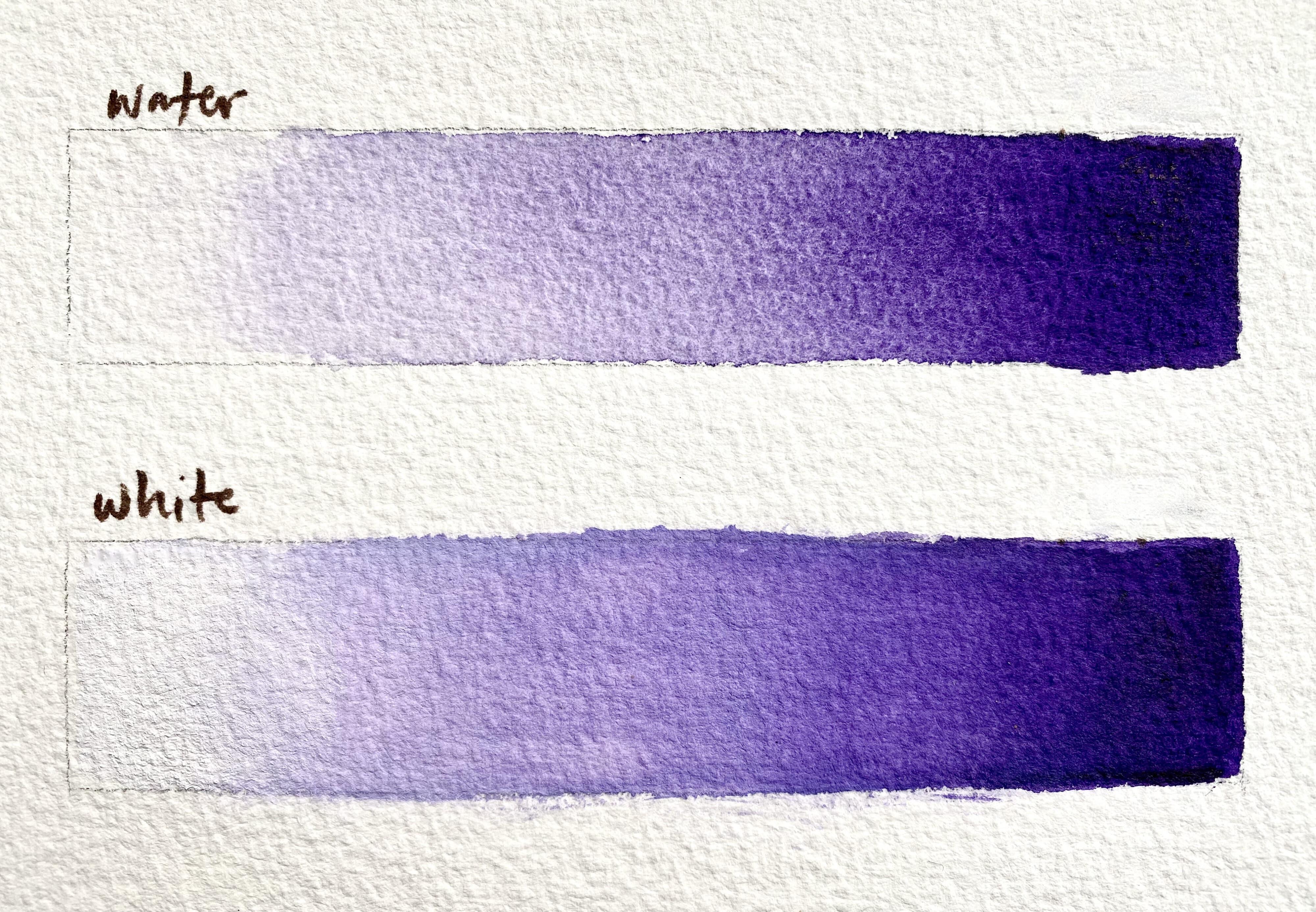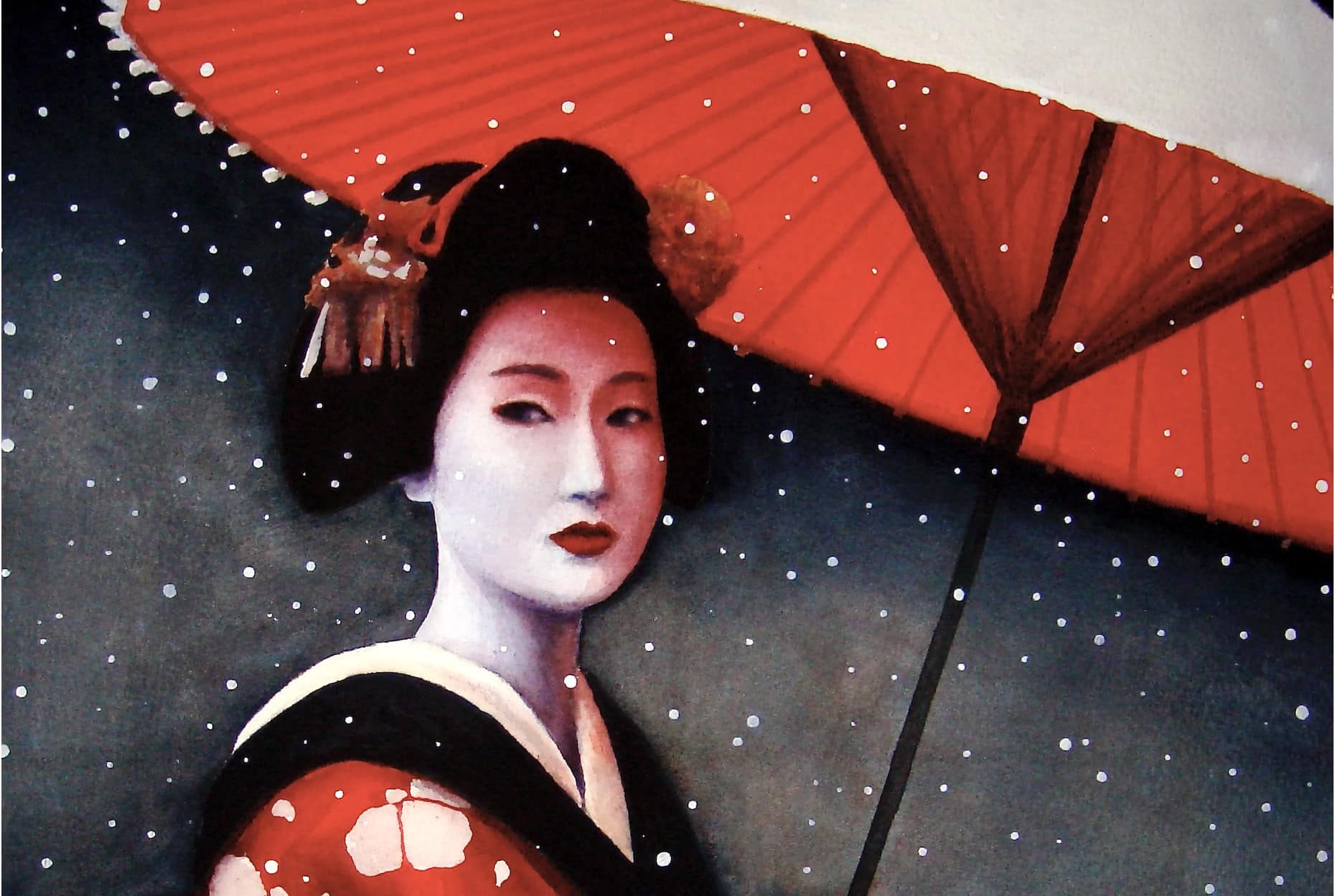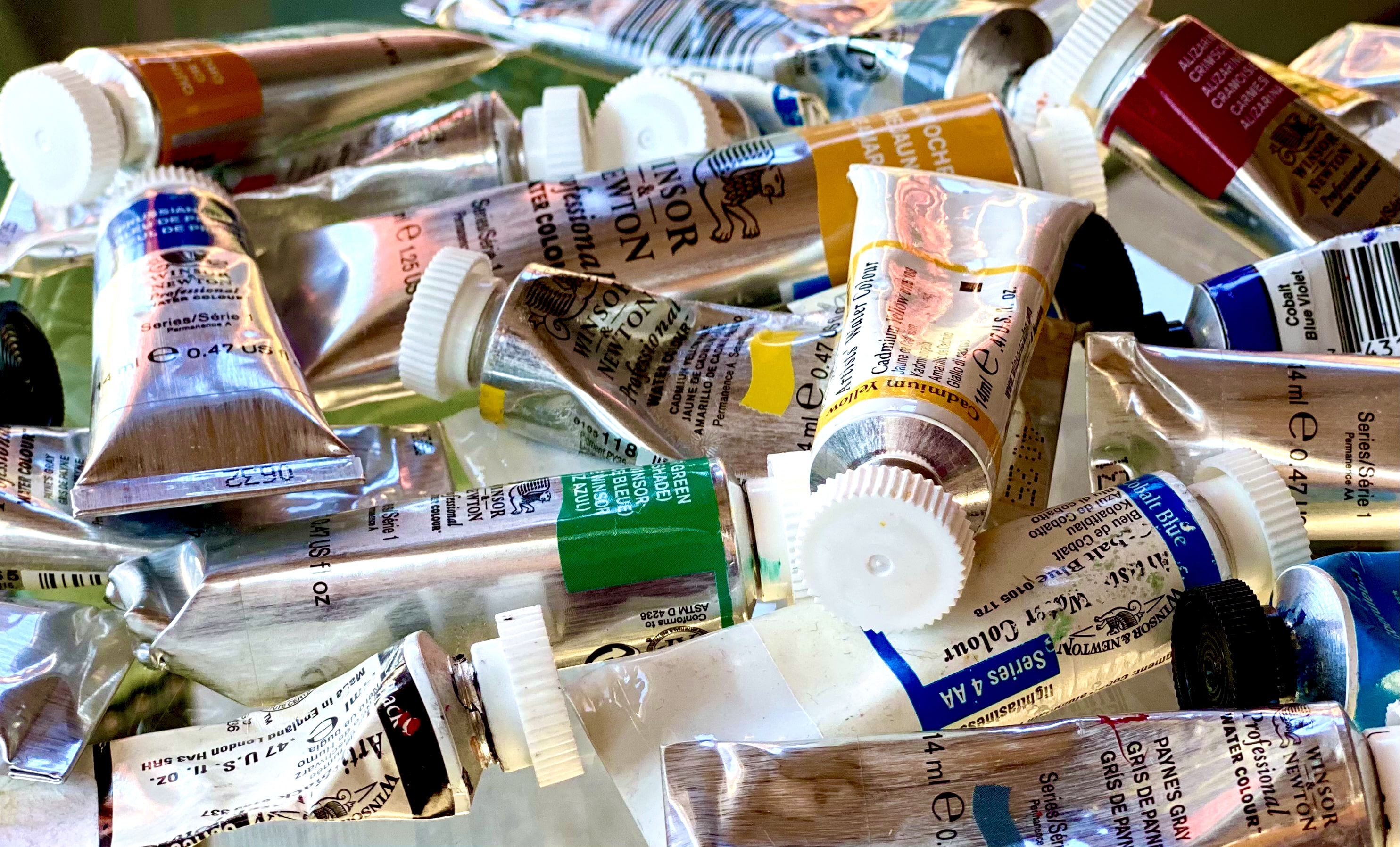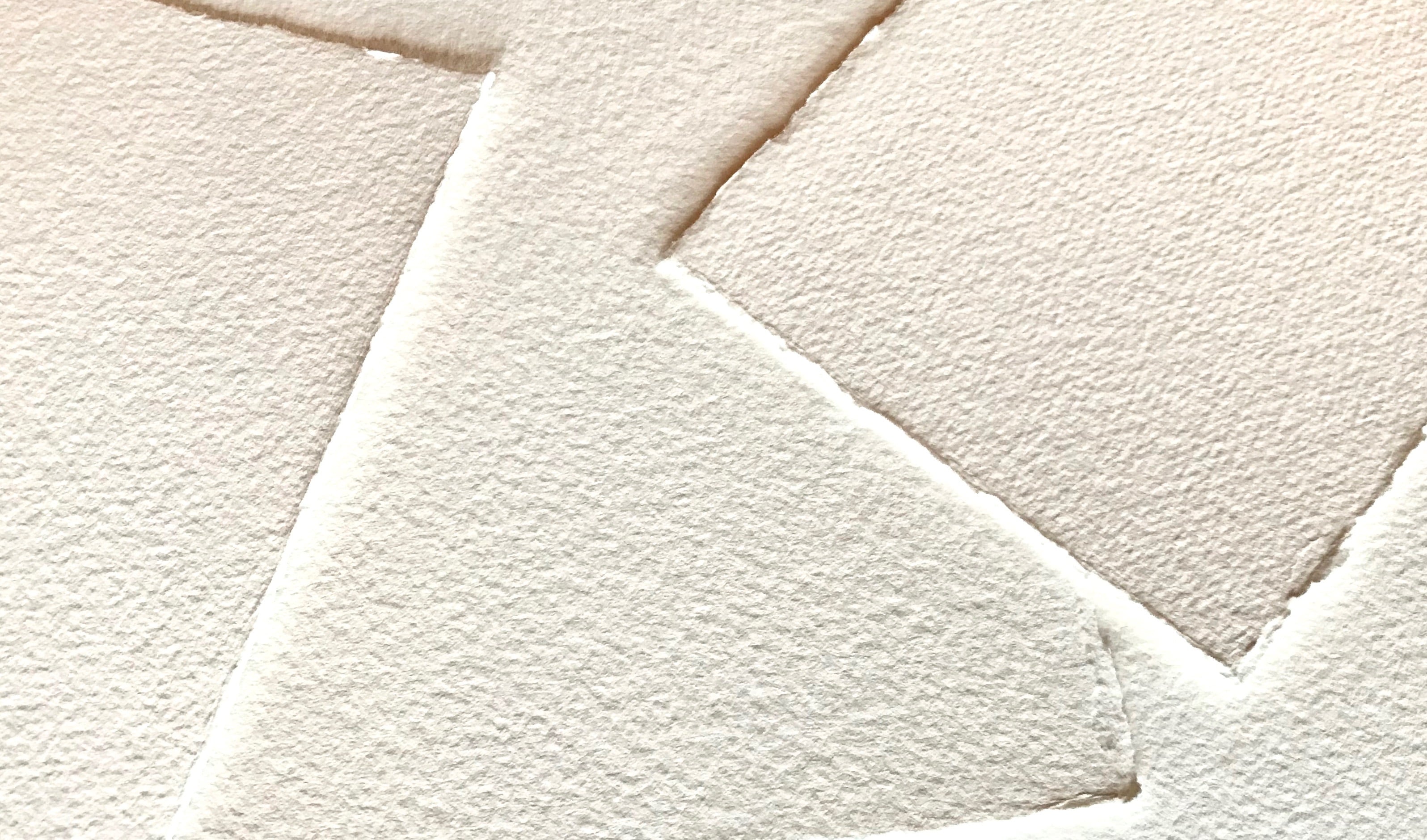Painting Without White
November 20, 2020

Monk and Lanterns – Rochelle Heywood
Did you know that white paint isn’t used in traditional watercolors? True story. The reason? Watercolors are, for the most part, transparent, so the white of the paper shows through. With watercolors you don’t completely cover the paper with pigment, you just decide how much of it to leave exposed. When painting something white or very light, the artist paints only very light washes of color and allows the white of the paper to show through. The paper has a luminance to it that is diminished as paint layers build up on it.
White paint is opaque. It covers the white of the paper. Mixing white with watercolors will make them more opaque, changing the overall look. To show what happens when you mix watercolors with white paint, I made two color gradients. The one on top is just water and pigment. The bottom is mixed with white. The white of the paper remains visible in most of the top gradient but is lost in the one on the bottom. The mixed white and purple have formed an opaque layer that comes across as rather flat.

Purple watercolor mixed with water (top) and white paint (bottom)
There is a medium called goache (pronounce it “gwash” as in ‘oh my goache’) which is basically watercolor pigment mixed with white paint. It is similar to tempera paint and is applied in a different way than watercolors.
But back to watercolors… look at the geisha in this painting:

Yukigasa (detail) – Rochelle Heywood
Lovely, isn’t she? It appears that she has white paint on her face. She doesn’t. The look was achieved by surrounding the white area with dark tones and painting red and purple shadows. Her face, her collar, the pattern on her kimono and the snow atop the umbrella are largely unpainted except for light washes of color. The only actual white paint used was the dots of falling snow.
The same goes for the monk and lanterns painting at the top of the blog. The “snow” on the lantern tops and branches are just areas with little to no paint. In watercolors, the paper does a much better job of providing the white.
White clouds, daisies, sailboat sails are painted the same way – brushing on light washes of color as shadows and reflections and leaving the rest unpainted. Generally speaking, the only time I use white paint is to add falling snow to a finished painting. It can be dotted on or spritzed on with a toothbrush. I usually do a combination of the two.
Of course there are always exceptions, and here’s one time that I skirted the don’t-paint-with-white rule… I was painting the Kabuki actor in the bushy white wig (below) in the conventional way, leaving the white areas mostly unpainted except for some shading. The face was looking good but I just couldn’t get the fuzzy look of the hair, and I was starting to think it was a lost cause. As a last-ditch effort I got out some white goache (basically white watercolor paint) and brushed it on. I had no confidence that it would work, but somehow it did. That’s why this painting is listed in the gallery as ‘watercolor and goache’.

White Kabuki Lion – Rochelle Heywood
If you look closely you may see how the opaque layers of white paint in the hair differ from the white of the face, which is unpainted except in the shadows. A layer of white paint would have ruined the face, but side by side the two whites seem to work, each conveying a different texture.
Another thing about white paint – like glitter, it tends to stick around. Even a little bit on a brush will turn your water milky, then everything the water touches will be slightly opaque. A smudge of white on a mixing surface will alter the transparency of colors that brush against it. So when painting white for whatever reason, paint it last. Then clean everything well before beginning your next painting project. That will give you a clean start and allow the gorgeous white of your paper to show through.



Comments